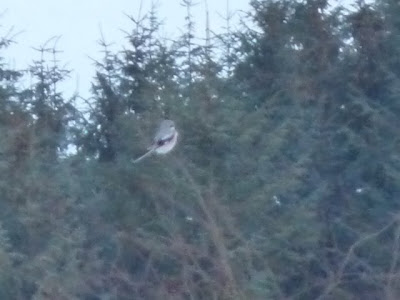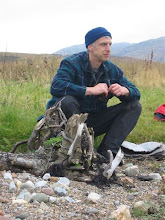





This is my last posting to the blog bog as I am changing jobs. After working for 10 years (a chunk of my life but a blink of an eye for a bog) as the Reserve Manager for Flanders Moss it is time for a change of scenery and the change couldn't be much more different as I am going to be the Reserve Manager for the Isle of May NNR, the seabird island in the middle of the Forth estuary. Working on Flanders has been very special. For me it is the wildness and tranquility of the land that gives it a special atmosphere, coloured by the beautiful bog palette that is like not matched by anywhere else I know. But Flanders hasn't seen the last of me and in fact even on the Isle of May I will retain a watery connection with Flanders as the rainfall that is so important drains off the Moss into the Forth and then flows past me on the island and on out to sea. The post of reserve manager on Flanders Moss will be filled hopefully by mid March so you will get to see Flanders through another person's eyes. And in between times my colleagues Stephen and Nick will keep you up to date with what is going on on the Moss.
Working on the Isle of May, my head will be filled with the monitoring of the seabirds, migrant birds and seals, keeping the field station going and perhaps most importantly telling people about the island and why it is so important. This may well involve a blog so by all means check out the SNH NNR website for the Isle of May page and see what is going on on the island. Or you can always take the boat over from Anstruther and come for a visit. Say hello if you do that.
So I wish for a wet future for Flanders Moss and happy bogging for any visitors.
And seeing as the last posting ended on a poem why not this one (or two) as well, this poem by Sheena Blackhall is about the most important part of Flanders Moss, the keystone to the bog - the Sphagnum moss.
-
I am a child of the bog
I am sphagnum
Red as a cock's comb
Yellow as jester's bells,
Orange as carnival,
Green as a dragon's eye,
I drink the dew
From a thousand secret wells,
My coat of many colours is a sponge
Where rainbows tiptoe at dawn, to dip and plunge.
And the last verse of a poem called Flanders Moss by local poet Linna Monteith shows us how important places like this are:
A soft green bowl of precious pristine world
absorbing our breath and our fumes
saving us
from the grey of everyday.




























